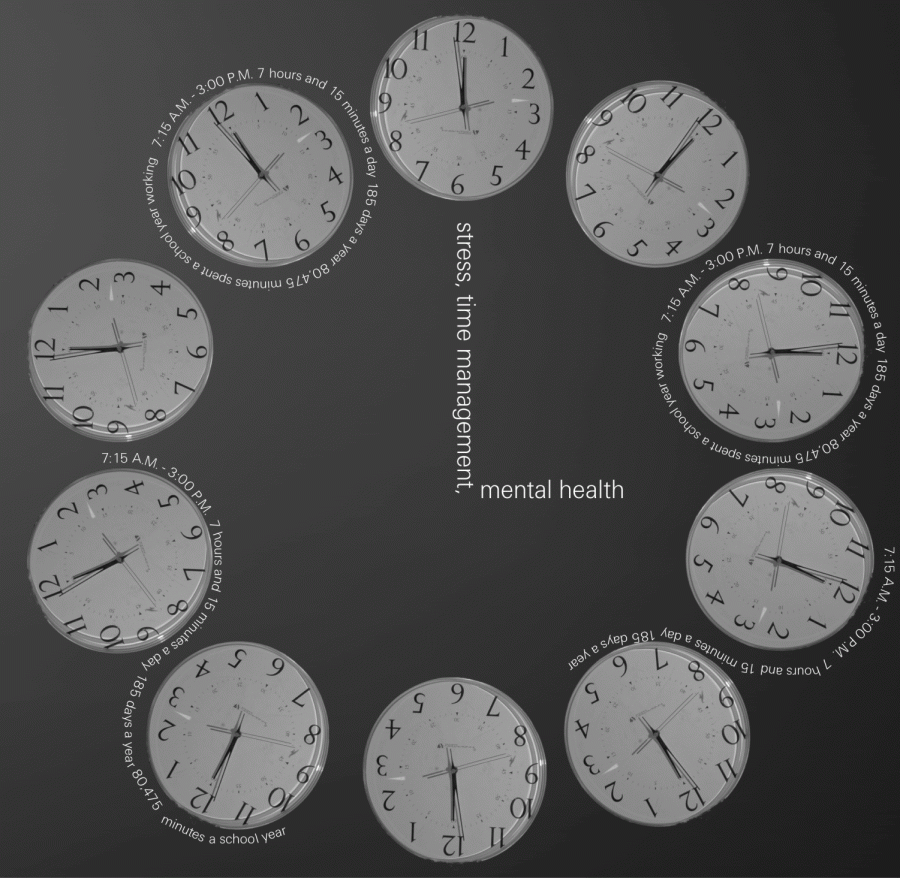Only so much time: Teachers and students discuss balancing mental and health and time in the classroom
Teachers and students discuss balancing mental health and time in the classroom
April 20, 2023
“We’re here in an effort to change and better the current reality of student mental health at Munster,” the flier read. “We hope to influence the growth needed to accommodate the students.”
Mental Health Club’s co-presidents, Olivia Evilsizor and Jocelyn Lemus, and vice president, Hiba Fatima, held a presentation for the teacher and staff faculty March 23, promoting ways that teachers can connect with their students and create a comfortable environment in their classrooms. Olivia represents the MHC and empowers the voice of the student body.
“We had a flier that included some mental health statistics on the front and three different scenarios on the back,” Olivia said. “The whole foundation of the presentation was how teachers can better serve students’ mental health and make school a more comfortable environment.”
While Crier began reporting on this story with the focus of student mental health, discussions with teachers and staff opened our eyes to issues that teachers face with their own mental health, a topic often misconceived by students. While the leniency in classrooms has been at an all-time high since the lockdown, this puts a lot of pressure on the teachers to lay down the law, creating a double-edged sword between educators and their students.
“In essence, you’re all still kids, and you’ll do what’s going to be best for you. You’re not there to take care of older people,” Mrs. Kathleen LaPorte, social studies teacher and Munster Teacher Association representative ,said. “But where I do think we’re lacking and where help could come is following rules. Let’s just try to be respectful of the policies and procedures in place, and it could make all the difference for teachers.”
However, teachers are often under the same pressure students are, and that takes a toll on their mental health just as much as students.
Crier took the time to speak with our adviser, Ms. Sarah-Anne Lanman, about some of the most common issues teachers face. Teachers can feel a lack of control: they need to follow rules from the legislature and administration. When problems arise, it can be difficult to voice concerns or get help. A lack of feedback opportunities can make certain professional development activities hard if teachers don’t fully understand why they are doing those activities.
Another problem is time: there’s only so much time in the day and many things that need to get done. According to the teaching contract, teachers must be at work from 7:15 a.m. to 2:55 p.m.— roughly a seven hour day. However, meetings like PLCs often take place in the morning, leaving little time for planning. Although administrators say teachers shouldn’t have to do any work for school outside of their contracted hours, social studies teacher Mr. Scott Stalbaum finds days when he works 12- 14 hours a day for school.
“Being able to both get your grading accomplished and teach the things you’re supposed to teach in the way the school expects you to do it in the day can be kind of rough,” Mr. Stalbaum said. “Like it or not, those things usually demand extra time you don’t have during the school day.”
In the position of the student, Jocelyn promotes ways to keep her own balance with teachers by exchanging the same respect.
“I feel like we can put more effort into caring about our teachers,” Jocelyn said. “If a teacher asks how we’re doing, we could reciprocate it by asking them the same thing.”





